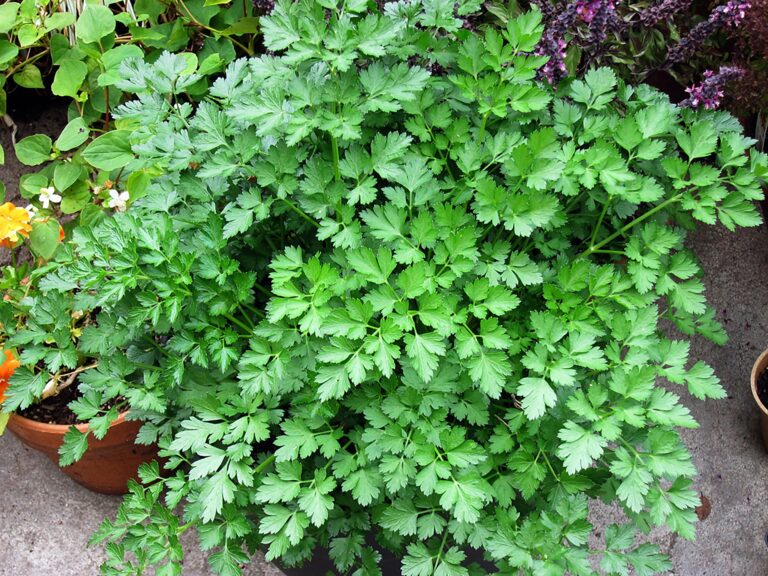Welcome to the lush world of Parsley (Petroselinum crispum), a versatile and beloved herb that has been gracing our kitchens and gardens for centuries. This delightful plant hails from the Mediterranean region, where its vibrant green leaves and delicate white flowers add a touch of elegance to any landscape. With its distinctive serrated leaves and aromatic fragrance, parsley is a staple in various culinary delights, enriching dishes with its fresh, earthy flavor. Luckily, caring for parsley is a breeze, making it an ideal choice for both seasoned gardeners and green-thumbed novices.
Let’s dive in and explore the wonders of this exceptional herb!
Common Parsley varieties:
- French parsley
- Italian parsley
- Hamburg parsley
Care
Beginner gardeners will find parsley to be an ideal companion as it does not demand much attention. However, there are a few things you should keep in mind:
- Soil: To successfully grow healthy parsley, you must ensure that the soil is enriched with organic nutrients and is well-draining to avoid waterlogging. It is crucial to maintain a slightly acidic to neutral pH level.
- Light: thrives in full sun, basking in at least six hours of direct sunlight daily, while appreciating a bit of shade during scorching afternoons.
- Water: Parsley prefers consistent moisture, neither too wet nor too dry. To keep your plant healthy, make sure it receives 1 to 2 inches of water per week. Avoid drought-like conditions that can cause wilting and browning.
- Temperature: Parsley needs soil at around 70°F to germinate well. It can tolerate temps from 50-70°F and doesn’t have strict humidity requirements.
Propagation
Grow from seeds or nursery starts, or try cuttings. To propagate, find a healthy 6-inch stem, remove leaves from the lower half, and plant it in moist soilless mix using a biodegradable peat container. Keep in bright, indirect sunlight with consistent moisture.
Seed germination takes 2-4 weeks with a low success rate. Improve odds by chilling and soaking seeds before planting. Seed-grown parsley is ready to harvest in 12-14 weeks.
Pruning
Pruning Parsley is very important if you want to keep this herb happy & healthy. Here are some tips for you:
- Inspect Before You Prune: Check the plant’s shape, structure, and new growth. Prioritize pruning where growth is blocked.
- Sharp Pruning Shears: Use sharp shears to cleanly cut wider stems, preventing damage and pests.
- 45-Degree Angle: Cut at an angle away from buds to safeguard them during watering.
- Remove Dead Flowers: Trim away spent flowers to conserve energy.
- Fertilize After Pruning: Replenish lost nutrients with a small amount of fertilizer. Avoid overfertilization if recently fed. Happy pruning for a thriving parsley plant!
Common pests
Frequently Asked Questions
Like many herbs, parsley thrives in a sunny location, basking in six to eight hours of direct sunlight daily. However, it can handle some light shade too.
Does parsley need cutting back?
Regularly pruning parsley encourages fresh growth and prevents it from becoming too woody or leggy. Trimming outer leaves and stems promotes continuous growth and keeps the plant healthy. Avoid removing more than one-third of the plant at a time to prevent excessive stress.
How often should I water parsley?
Water parsley deeply once or twice a week, moistening soil up to two inches. Wait for soil to partially dry before watering again. Water around base of plant, avoiding leaves. Keep parsley healthy and hydrated.
Can parsley be overwatered?
Parsley needs moist soil, but avoid drought or over-watering. Keep soil from drying out but don’t saturate it.
How do you keep parsley alive indoors?
Keep soil moist, but not waterlogged, when growing parsley indoors. Regular watering and a pot with drainage holes or self-watering feature can help prevent damage to the plant.


